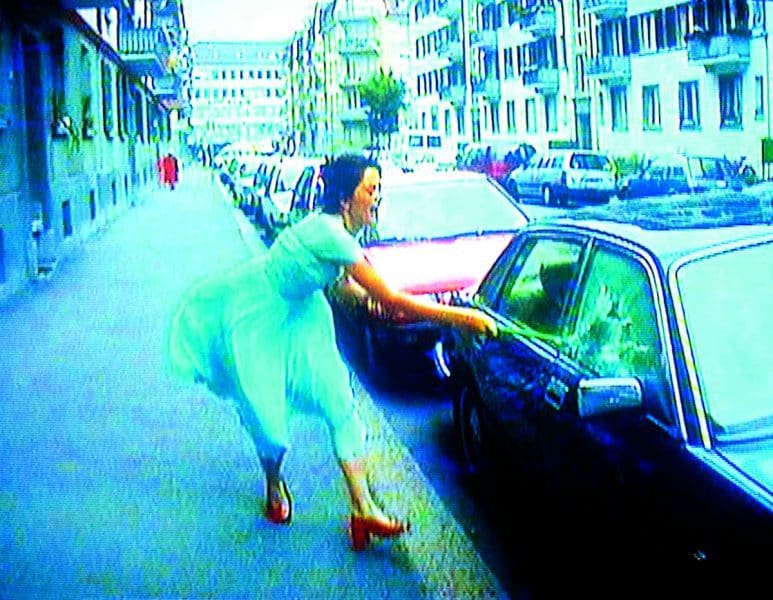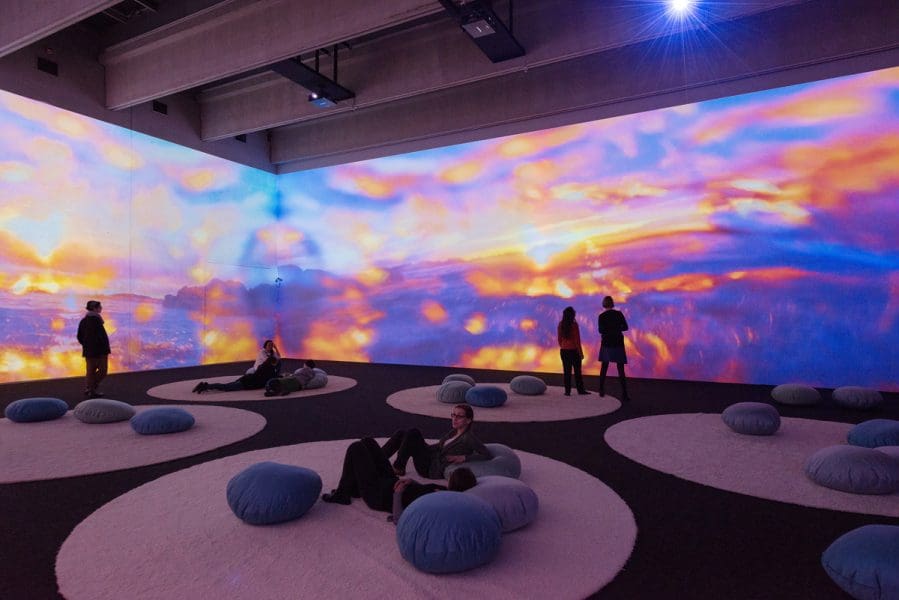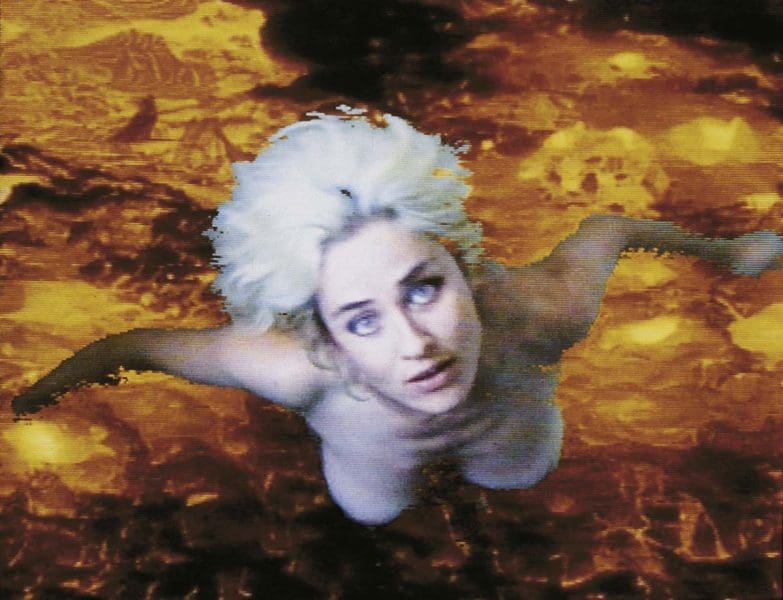
Piercing the veil
A new exhibition at Buxton Contemporary finds a rich complexity in the shadowy terrain between life and death.

Pipilotti Rist, Mercy Garden (still), 2013, multi-channel video installation with sound, courtesy the artist, Hauser & Wirth and Luhring Augustine © the artist.

Pipilotti Rist, Administrating Eternity, 2011, installation view, Komm Schatz, wir stellen die Medien um & fangen nochmals von verne an, Kunsthalle Krems, Krems, Austria, 2011, courtesy the artist, Hauser & Wirth and Luhring Augustine © Pipilotti Rist, photograph: Lisa Rastl.

Pipilotti Rist, Administrating Eternity, 2011, installation view, Pipilotti Rist: Eyeball Massage, Hayward Gallery London, London, 2011, courtesy the artist, Hauser & Wirth and Luhring Augustine © Pipilotti Rist, photograph: Linda Nylind.

Pipilotti Rist, Ever Is Over All (still), 1997, single channprojectors, players, sound system, paint, carpet, courtesy the artist, Hauser & Wirth and Luhring Augustine © the artist.

Pipilotti Rist, Gnade Donau Gnade2, from the Mercy Garden Family, 2013–15, installation view, Komm Schatz, wir stellen die Medien um & fangen nochmals von vorne an, Kunsthalle Krems, Krems, Austria, 2015, courtesy the artist, Hauser & Wirth and Luhring Augustine © the artist, photograph: Lisa Rastl.

Muda Mathis & Pipilotti Rist, Japsen (still), 1988, single-channel video, sound, colour, courtesy the artists, Hauser & Wirth and Luhring Augustine © Muda Mathis, Pipilotti Rist.

Pipilotti Rist, Pixelforest Mutterplatte, 2016, installation view, Pipilotti Rist: Your Saliva is my Diving Suit in the Ocean of Pain, Kunsthaus Zürich, Zurich, Switzerland, 2016, courtesy the artist, Hauser & Wirth and Luhring Augustine © the artist, photograph: Lena Hubler.

Pipilotti Rist, Selbstlos im Lavabad (Selfless In The Bath of Lava) (still), 1994, single-channel video installation, sound, colour, LCD screen set into the floor, player, courtesy the artist, Hauser & Wirth and Luhring Augustine © Pipilotti Rist.

Pipilotti Rist, Selbstlos im Lavabad (Selfless In The Bath of Lava) (still), 1994, single-channel video installation, sound, colour, LCD screen set into the floor, player, courtesy the artist, Hauser & Wirth and Luhring Augustine © Pipilotti Rist.
Long before second wave feminism of the 1970s morphed into the glittering spectacle of ‘Girl Power’ (as embodied by the ginger, baby, sporty, scary, posh and always sexy Spice Girls) another pop-cultural creation showed the world an alternative version of feminine strength. Since Swedish author Astrid Lindgren published her first adventure in 1945, Pippi Longstocking has become a feminist icon. Smart, scruffy, independent and incredibly strong, this fictional girl has been an inspiration to several generations of determined children around the world. The artist Pipilotti Rist even named herself, in part, after Lindgren’s redheaded rascal.
In her late teens she combined her two childhood nicknames (Pippi Longstocking’s first name and a version of her own middle name) and became Pipilotti. The survey show at the MCA, Pipilotti Rist: Sip my Ocean, traces Rist’s trajectory over 30 years and, particularly in her early work, it is easy to see the influence of Longstocking’s iconoclastic feminism.
While still at art school, Rist garnered critical attention with a single-channel video work, I’m Not The Girl Who Misses Much, 1986. The artist attributes the success of this work to its DIY aesthetic. As she points out, it was made when TV programming in Europe was still largely state sanctioned, so producing something yourself was an act of creation with political overtones. But the video also oozes a raw power, unabashedly rooted in confident feminine sexuality.
According to the MCA website, “The work shows the artist in a low-cut black folk dress wildly dancing and chanting a song adapted from The Beatles song ‘Happiness is a Warm Gun’ (1968).” But “low-cut” is euphemistic at best. Rist’s breasts are actually completely uncovered, yet this act of exposure seems more defiant than enticing. Like Longstocking, Rist is flouting conventional standards of feminine dress and acceptable behaviour rather than flaunting her flesh.

“Pipilotti’s work is discussed by some critics in relation to feminism and feminist ideas,” acknowledges Natasha Bullock, curator of Rist’s exhibition at the MCA. “She describes herself as a feminist in a pragmatic way because she is interested in equal salaries and equal jobs. In terms of her work, Ever is Over All, 1997, is the video most often associated with ‘feminist’ ideas because it shows a young woman walking down a street casually and gleefully smashing car windows. There’s a great sense of euphoria and abandon about this work.”
However, as you might expect, Rist’s concerns have shifted over time. Both of the aforementioned early works are on show in the exhibition Sip my Ocean, alongside the video of the same name from 1997, and another, Japsen, from 1998. But in her more recent works, which predominate, Rist seems more interested in creating multi-screen, multi-media installations.
“I believe her ethos now is less about the female subject and more about the common threads that bind us as human beings, and our place within a wider cosmos in which we can all live together.”
According to Bullock, Rist’s installations are best described as immersive. “In art world parlance, immersive is an over-used word,” she concedes, “yet it comes close to the experience of a number of Rist’s works. The word describes the enveloping sensation of being ‘inside’ her environments.” Bullock cites as examples several projects which viewers can experience for themselves in Sip my Ocean: the maze of projections and floating curtains that is Administrating Eternity, 2011; Pixelwald, 2016, a collaboration with Kaori Kuwabara that features a forest of hanging lights which respond to music; and 4th Floor to Mildness, 2016, in which viewers lie on beds while projected images wash over them. As Bullock says, in these installations “you are, I would argue, immersed within the experience.”

These works have a theatrical edge which is particularly evident in the new installation Rist has created specifically for the MCA show. In Your Room Opposite the Opera, 2017, gallery visitors explore a surreal, chaotic version of a domestic space. From a video monitor in the floor a woman screams, “I am a plant! You are a flower!” and the furniture is interactive. Bullock says, “For Pipilotti, the intention is to place the viewer in the heart of the work. She creates a stage and you become the actor, who is free to engage.” Feminist prankster Pippi Longstocking would feel right at home in her namesake’s unpredictable environment. Maybe some things don’t change.
Pipilotti Rist: Sip my Ocean
Museum of Contemporary Art, Sydney
1 November – 18 February 2018